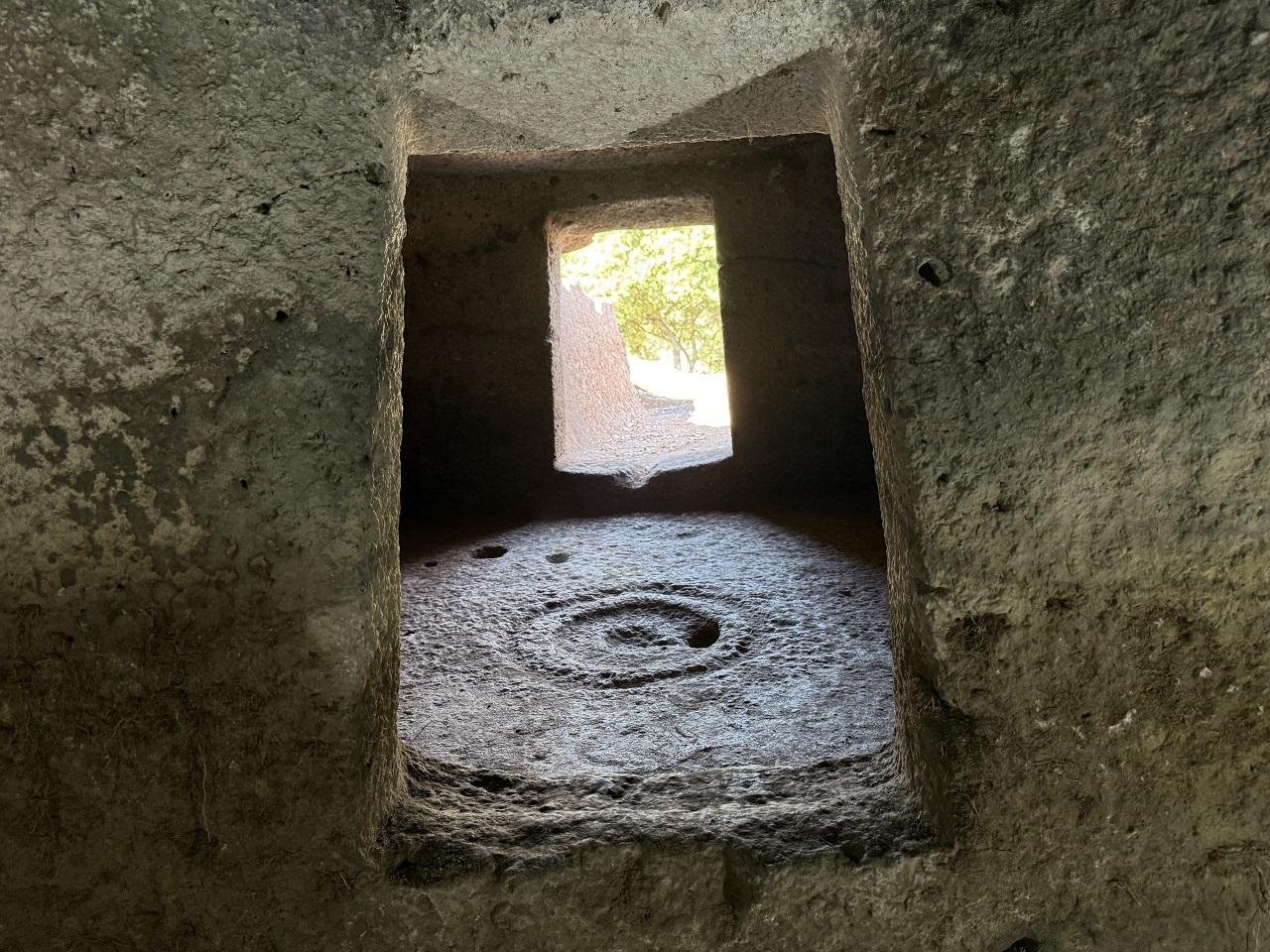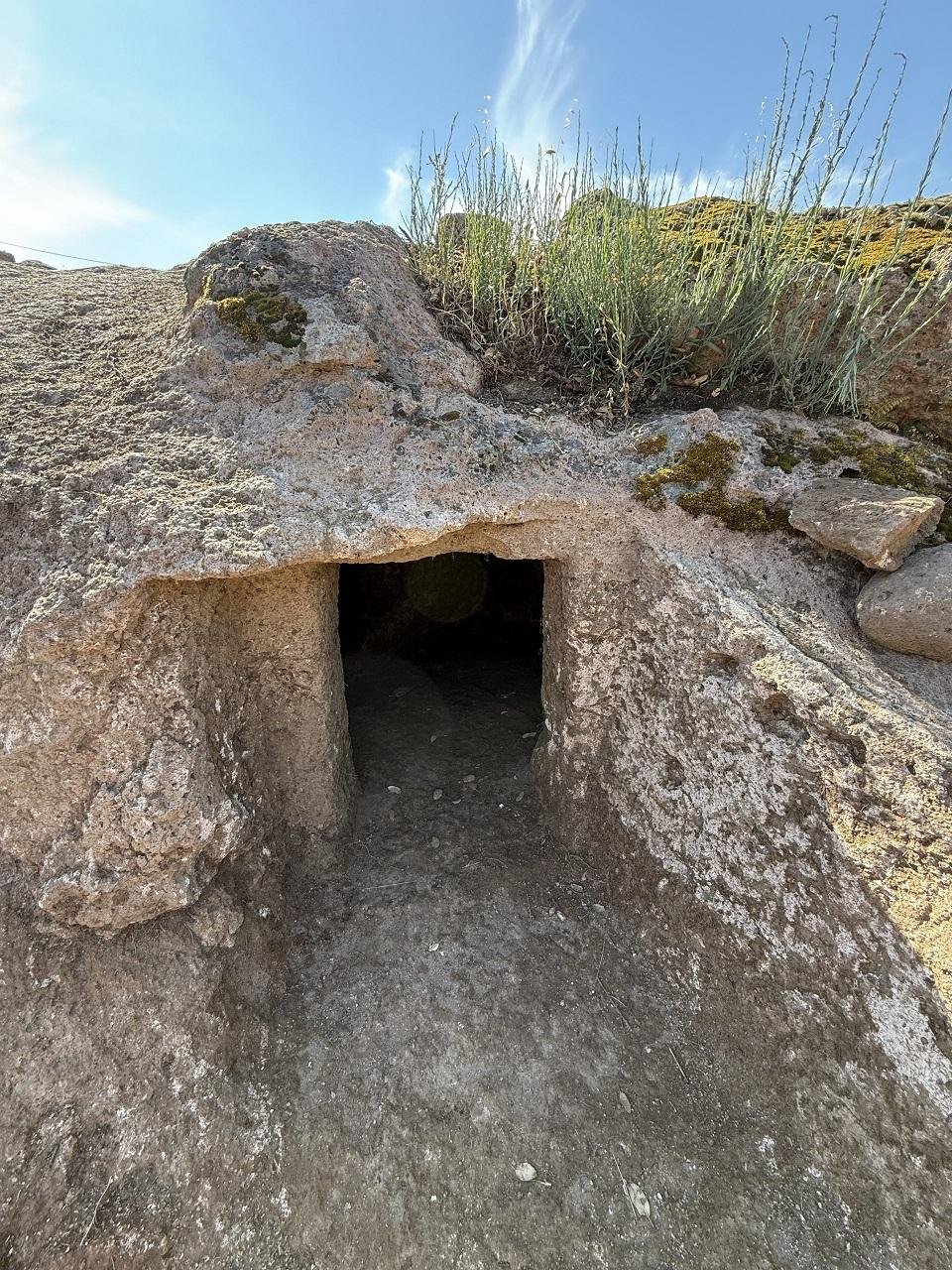In a significant archaeological find, researchers have unearthed three previously unknown domus de janas, or “fairy houses,” in the Sant’Andrea Priu archaeological site in Bonorva, Sardinia.
 Bonorva, S.Andrea Priu, Tomb XVIII. Credit: Regional Secretariat of the Ministry of Culture for Sardinia
Bonorva, S.Andrea Priu, Tomb XVIII. Credit: Regional Secretariat of the Ministry of Culture for Sardinia
These rock-cut tombs, officially designated as Tombs XVIII, XIX, and XX, bring the total number of known hypogea at the site to twenty and significantly enhance our understanding of Neolithic funerary practices and society in the Meilogu region.
The finds were made as part of a wider excavation, restoration, and expansion project coordinated by the Ministry of Culture for Sardinia. The three recently discovered tombs have been arranged in a dramatic fan-shaped formation radiating out from the previously excavated Tomb XIII, commonly referred to as the “Tomb of the Hearth.”
Located near the worked rock formation known as the “Campanile” or “Toro,” a feature that dominates the surrounding plateau, this discovery exemplifies how ancient settlements may have chosen their burial sites based on geological and symbolic importance.
 Bonorva, S.Andrea Priu, Tomb XIX. Credit: Regional Secretariat of the Ministry of Culture for Sardinia
Bonorva, S.Andrea Priu, Tomb XIX. Credit: Regional Secretariat of the Ministry of Culture for Sardinia
Each tomb possesses unique architectural and material features:
Tomb XVIII, the first uncovered, features a sharply cut corridor or dromos leading into a square chamber. A carved hearth with a depression in the center occupies the chamber’s center, likely symbolizing continuity of domestic life and burial rituals. The chamber leads to a larger room that is rectangular in shape and connects to a third, smaller one on the left. Among the important artifacts found here were stone pickaxes, a small greenstone axe, a spindle whorl, and fragments of obsidian.
 Sant’Andrea Priu necropolis. Credit: Gianni Careddu/CC BY-SA 4.0
Sant’Andrea Priu necropolis. Credit: Gianni Careddu/CC BY-SA 4.0
Tomb XIX is smaller but equally valuable to researchers. It features a small external pavilion that leads to a rectangular chamber, which further leads into a rounded, niche-like space. Obsidian pieces and ceramic items, including a small vase allegedly utilized for rituals, were also found in this tomb.
Tomb XX is the most complex and features seven chambers branching from an entrance room. One chamber is decorated with a painted band—a beautiful artistic remnant from the ancient world. Dubbed “The Tomb of the Roman Vases,” it contained more than 30 intact ceramic items from the Roman era, including pitchers, oil lamps, and plates. These later funerary insertions show that the tombs were used across different time intervals, from Neolithic to Imperial Roman times, and that there existed long-term cultural continuity.
The artifacts from all three tombs have been sent to the Superintendency’s Restoration and Conservation Centre in Li Punti for analysis and preservation. In the meantime, excavation work will continue in the lower part of the site, where Roman and early medieval settlement remains suggest that this location remained culturally and spiritually significant across centuries.
More information: Regional Secretariat of the Ministry of Culture for Sardinia





